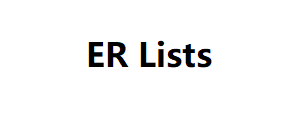In today’s digital world, communication often takes place through texts, emails, and video calls. But there are still times when a good old-fashioned phone call is the best way to connect. However, navigating different dialing formats, especially for international calls, can feel like solving a puzzle. Fear not, fellow communicators! This guide will equip you with the knowledge to put it all together, ensuring your calls connect seamlessly.
The Building Blocks of a Successful Call: Deciphering the Dial String
A dial string is the complete sequence of numbers you enter to make a phone call. It’s like a recipe, with each element playing a vital role in connecting you to the right person. Here’s a breakdown of the key ingredients:
Country Code: This unique identifier signifies the nation you’re calling. For example, the United States has a country code of +1, while Canada uses +1 as well. You’ll need this code for international calls.
Area Code (Optional):
This code designates a specific city or region within a country. Area codes are essential for landline calls within a country but not typically required for mobile numbers.
Local Phone Number: This is the unique seven or ten-digit number assigned to a specific phone line.
Crafting Your Dial String: A Step-by-Step Guide
Ready to put your newfound knowledge into action? Here’s how to construct a dial string for various scenarios:
Calling a Local Landline (Within Your Country): Simply dial Denmark Email List the local area code (if applicable) followed by the seven-digit phone number. For instance, to call a landline in Manhattan, New York, you might dial 212 (area code) 555 1234.
Calling a Local Mobile Number (Within Your Country):
Mobile numbers typically don’t require area codes. Just dial the ten-digit mobile number directly.
Calling an International Landline: Here’s where the country code comes in! Begin with the country code of the nation you’re calling, followed by the area code (if applicable) and the local phone number. For example, to call a landline in London, England, you would dial +44 (country code for UK) 20 (area code for London) 7946 0321.
Calling an International Mobile Number:
The process is similar to calling an international landline, but you might need to omit the leading zero from the mobile number depending on the country. Always check the specific dialing format for the country you’re calling.
Here are some additional tips for crafting the perfect dial string:
Double-check the number: Typos can lead to failed Copywriters & SEO experts, connect them with a style guide connections. Ensure you’ve entered the number correctly before hitting dial.
Use the correct country code: A wrong country code can send your call to a completely different destination!
International calling apps: Consider using an app specifically designed for international calls, which can offer lower rates and eliminate confusion about dialing formats.
Putting It All Together: Making the Connection
Now that you understand the components of a dial string, here’s how to put it all together for a successful call:
Gather the Information: Have the phone number you want to call and the country code for the destination country readily available.
Construct the Dial String: Following the steps above, build your dial string by including the country code, area code (if applicable), and the local phone number.
Pick Up the Phone and Dial: Enter the complete dial string on your phone and hit dial.
With this knowledge at your fingertips, you’ll be a dialing master! So go forth, connect with confidence, and let the conversations flow, no matter the distance. Remember, sometimes a simple phone call can bridge geographical gaps and create meaningful connections.



